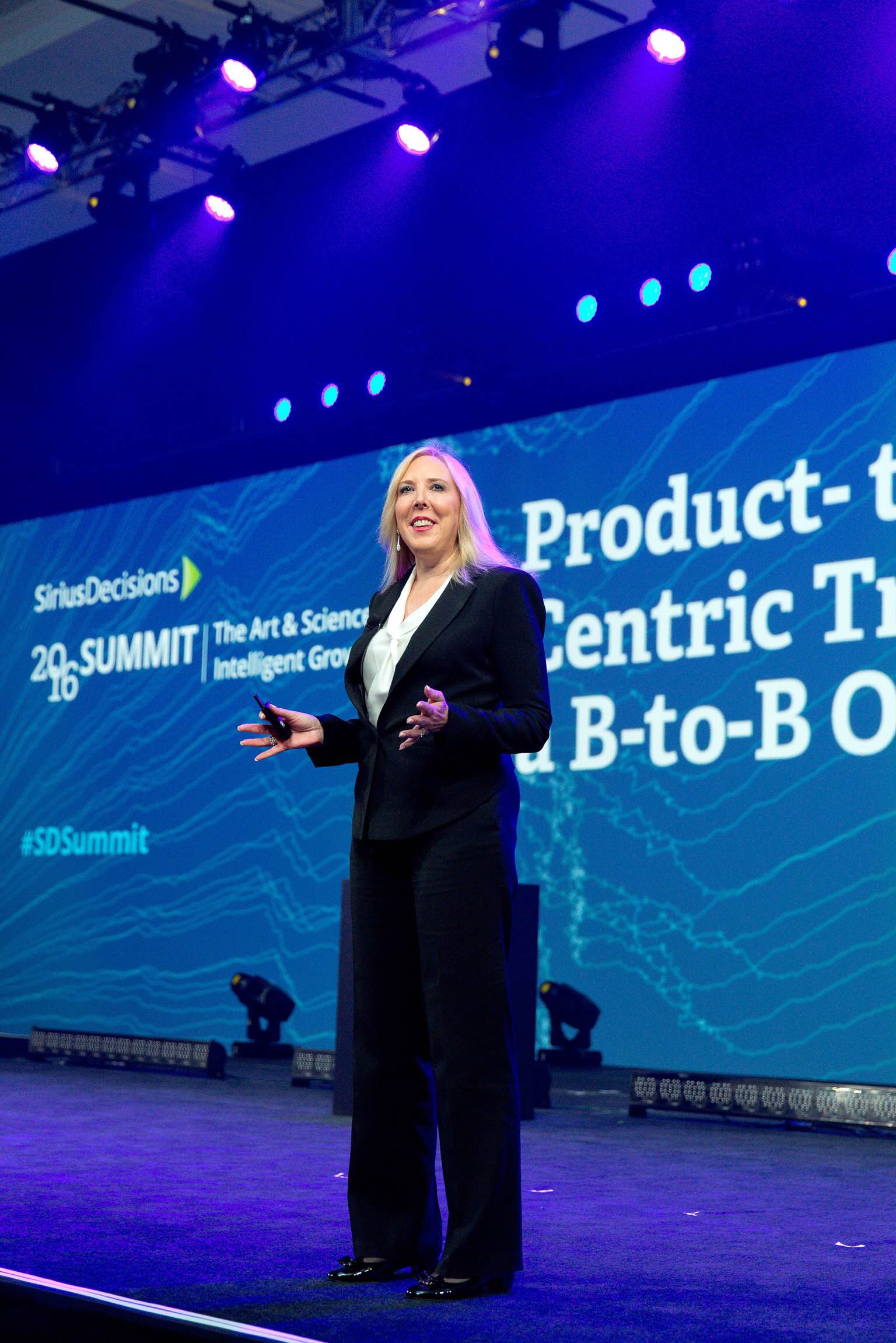SiriusDecisions Summit 2016 Highlights: Dr. Kopec’s Prescription for Moving From Product- to Audience-Centricity
- Many B2B companies can see their products and solutions, but they have a hard time seeing their buyers
- At SiriusDecisions 2016 Summit, Marisa Kopec introduced the SiriusDecisions Go-to-Market Design Process Framework to remedy this
- The framework’s dials sharpen a company’s view of its audience, prescribing a go-to-market strategy based on 20/20 buyer vision
What is a phoropter? If you were in the Summit audience during Marisa Kopec’s session on “Product to Audience-Centric Transformation: A B2B Odyssey,” you now know the answer to this question. For those who missed it, don’t worry, it’s not a new must-have technology for B2B leaders.

A phoropter is the diagnostic tool used by ophthalmologists to test a patient’s eyes. Said patient looks through the device’s multiple lenses, each of which measures an aspect of the individual’s eyesight. As the doctor turns the dials, the patient’s vision is improved or distorted. By adjusting the phoropter to a setting that makes it the patient’s vision perfectly clear, the doctor can recommend a precise prescription based on the patient’s exact needs.
What, you may ask, does this have to do with B2B?
“Without my glasses or contacts, I can barely see below the E on this eye chart,” said Marisa. “Many B2B companies have the same problem; they can see their products and solutions, but they have a hard time seeing their buyers. The reality is that B2B companies don’t naturally have 20/20 buyer vision.”
With this diagnosis in mind, Marisa introduced SiriusDecisions’ B2B version of the phoropter: The SiriusDecisions Go-to-Market Design Process Framework. “Basically, moving to an audience-centric go-to-market approach requires a new set of glasses,” says Marisa. The framework’s five “dials” are adjusted to sharpen an organization’s view of its audience, with the ultimate objective of prescribing a go-to-market strategy based on 20/20 buyer vision:
Dial one: Identify your audience. The first step is to keep turning the dial until you reach perfect clarity on the target buyer audience segments for the enterprise’s offering portfolio. To do this, identify the four primary parameters that define a B2B buyer audience: geography, industry, enterprise size and account profiles.
Dial two: Identify and prioritize the buyer personas. To move toward an audience-centric approach, you must also identify and prioritize the buyer personas by answering the question “Who is the economic buyer?” SiriusDecisions has identified three common scenarios in b-to-buying:
- In an independent buying scenario, one or two people are involved in the buying decision. This type of scenario typically occurs in smaller companies with lower-priced offerings.
- A consensus buying scenario involves three to five people who vote on a purchase decision.
- A committee buying scenario usually involves 12 or more individuals. This scenario is the most complex, and typically occurs in large organizations that are making expensive purchases.
Dial three: Define buyer need. Turn this dial next to reveal three dimensions of buyer need: organizational (aligned to the industry needs that are commonly referred to as the business issue), functional (buying center requirements), and individual (the persona’s informational and psychographical needs that support the buying decision). The SiriusDecisions Needs Aperture (introduced earlier at Summit by Jeff Lash and Rachel Young) is designed to facilitate the process of defining buyer needs.
Dial four: Portfolio mapping. Align each offering in the portfolio to a need that has been identified. The purpose of mapping the offerings to the audience segments and their needs is to figure out where the needs align most closely with available offerings and where gaps exist (which may indicate likely areas for innovation). If multiple large gaps exist, the audience segment should not be a near-term go-to-market priority, while areas with a good portfolio fit and organizational capabilities that fully or mostly meet buyer needs should be greenlighted for go-to-market execution.
Dial five: Determine the pathways to market. The key to audience-centricity is not only figuring out the buyer audience segments, but also determining how they buy. Targeting and portfolio mapping are only half the equation; the other half is determining the outcomes or results that need to be achieved. The data revealed by turning this dial makes it possible to design a marketing strategy and sales strategy, and to identify routes to market.
The concept of a “one-size-fits-all go-to-market approach” or “We can sell to whomever will buy” is a form of internal nearsightedness, said “Dr. Kopec.” Instead of taking a shortcut or making a quick fix – like buying a pair of drugstore reading glasses to fix an astigmatism – it pays to take the doctor’s advice: “Don’t assume you know who your buyer is…make sure you are using both art (qualitative) and science (quantitative) to target and cross-functionally validate that your sights, and investments, are focused on the right audience.”